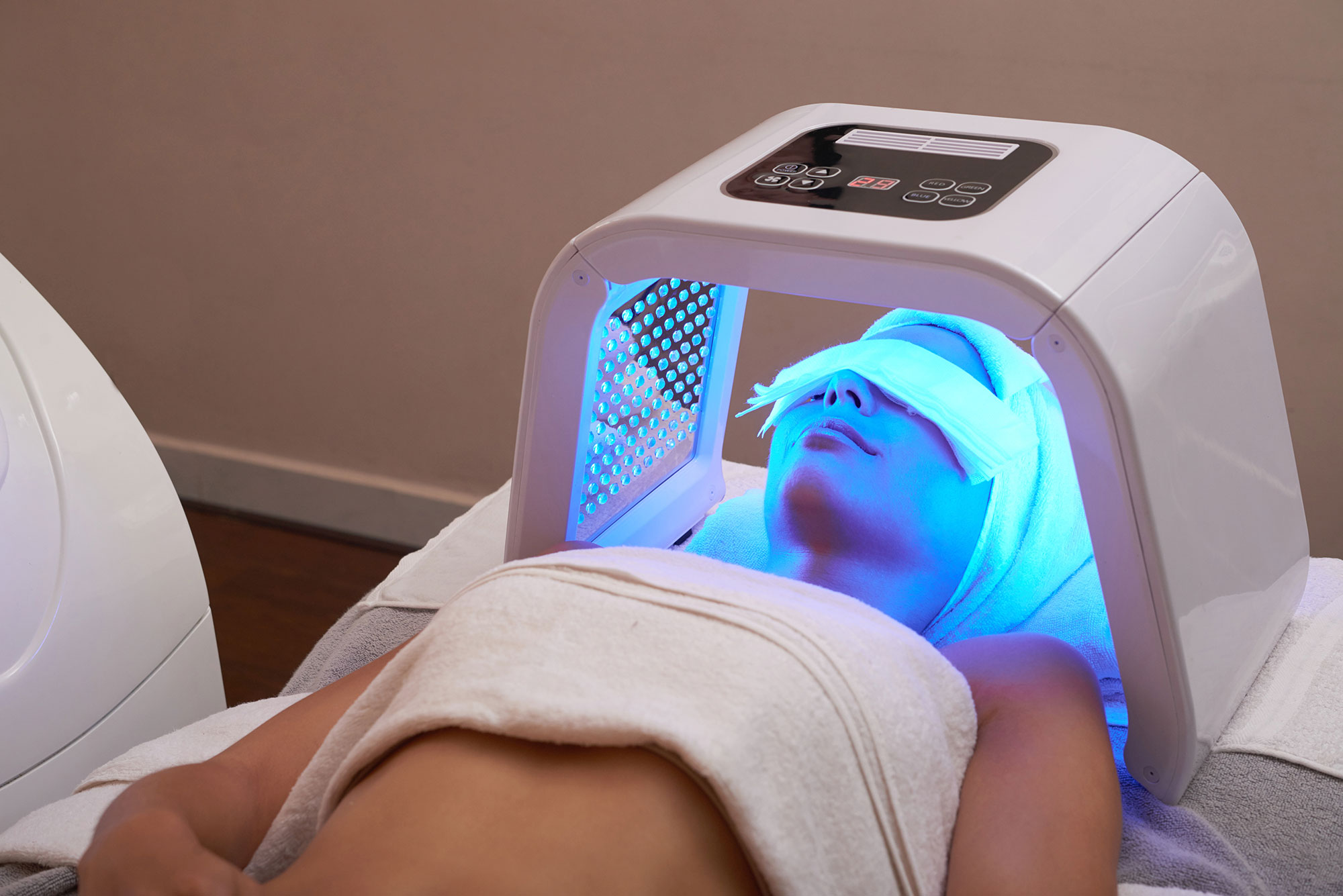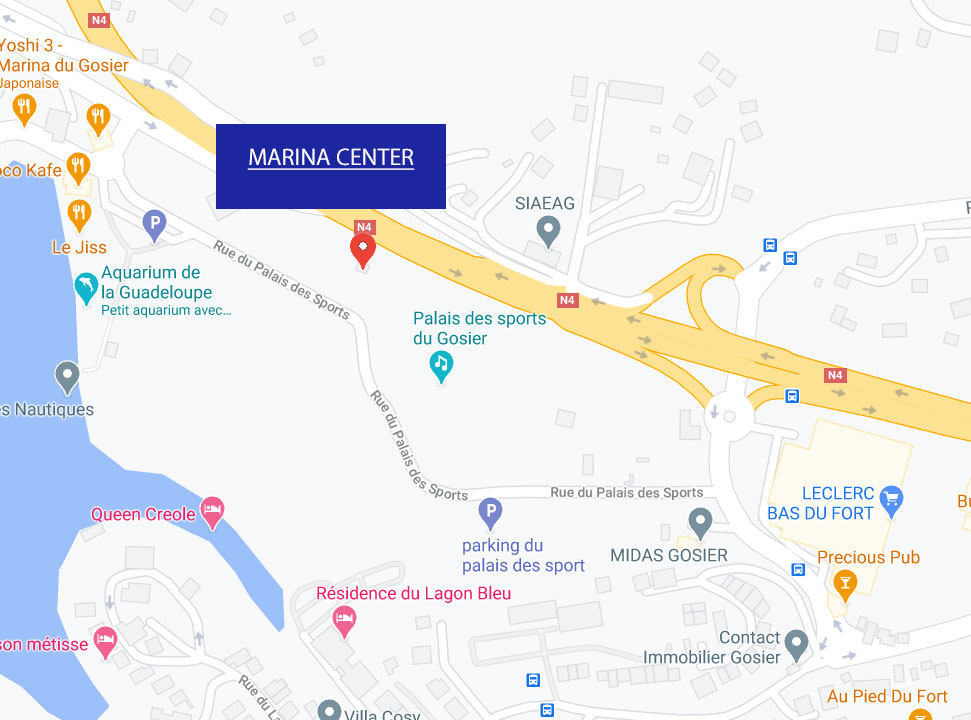PHOTOMODULATION WITH THE MEDICAL LED
LEDs emit light rays that prove to be valuable tools in aesthetic medicine: this completely painless and even pleasant treatment has proven anti-aging, anti-imperfection and antibacterial virtues. Alone or combined with other aesthetic solutions, medical LED is a great ally for the beauty of the skin – of all skins – and even of the hair.
THE EFFECTS OF LIGHT
We all know that light affects our mood. Light therapy, for example, is a treatment that involves exposing a person to light similar to that emitted by the sun to treat depression, circadian rhythm disorders and insomnia.
But light also acts on the living cells of the skin, especially infrared light. NASA has also demonstrated through various works their regenerating and healing properties. LEDs (Light Emitting Diodes) emit a cold light and have been used to grow plants in space cabins but also to accelerate the healing of wounds. They would even bring relief to cancer patients.
LED LIGHT MODULATION : HOW DOES IT WORK ?
The light penetrating the skin will act on all the organs, following a mechanism equivalent to phototherapy, which is what allows plants to breathe. The light spectrum will stimulate our cells and in particular the mitochondria, which provide cellular energy, and in particular oxygen. This is called photo-modulation.
Thus the LED will activate cellular energy, no matter what the cell! This is why it is beneficial for all our tissues (skin, muscles…) and even hair.
And this light therapy is pleasant and without any side effects.
MEDICAL LED: WHAT EFFECTS IN AESTHETICS?
Each LED color – red, yellow or blue – has its own benefits! Acne, wrinkles or redness, in aesthetic medicine, several wavelengths are used, sometimes combined, depending on the protocol and the indication.
- Yellow light (590 nm wavelength) has a proven anti-aging effect: it stimulates fibroblasts to boost collagen production.
- Blue light (415 nm) is antibacterial, so it is ideal for treating acne because it attacks the bacteria responsible for it
- Red light (630 nm) is used against redness and also has anti-inflammatory properties.
Doctor HAVET has the most powerful medical LED on the market, made in France, and specially designed for professional medical and aesthetic use.
MEDICAL LED: WHAT ARE THE INDICATIONS?
The LED can be used on its own but also – and this is its great asset – to enhance medical and aesthetic treatments and thus help to visibly improve the quality of the skin:
- Post-treatment: after an injection, a peel, a facial mesotherapy, a tensor thread application, etc.
- In anti-aging treatment: LED is an excellent treatment for damaged, wrinkled and/or stained skin, which it helps to tone, densify and homogenize.
- In order to regenerate and relieve the skin: on recent stretch marks, a burn, a scar, after a sunburn.
- In the treatment of acne, alone or combined with a peel
- As part of a treatment for alopecia (baldness) because the LED activates the microcirculation. This leads to a better penetration of the active ingredients present in the capillary mesotherapy cocktail or PRP.
VISIBLE BENEFITS OF THE LED ON THE SKIN
LED photo-modulation is a choice ally, painless and non-invasive that will really beautify your skin. Its virtues are multiple and can be seen session after session:
- The tissues are plumped up: the skin is more supple, more toned and firmer
- Reduced wrinkles and fine lines
- The complexion is globally more uniform, more luminous, the pores are tightened: a real radiance boost
HOW DOES A MEDICAL LED SESSION TAKE PLACE AT DOCTOR HAVET’S OFFICE?
Depending on the area to be treated, you are comfortably installed in a lying or semi-sitting position.
Either the session is performed after another aesthetic procedure (peeling, mesotherapy, injection…), or it is performed alone. In this case, the skin is cleaned and disinfected beforehand.
In order to protect your eyes from the strong luminosity of the LED and for more comfort, Doctor HAVET will put on specific glasses.
The panel is placed a few centimeters from your face. Then you can relax and listen to music, for example.
LED is a risk-free technology, and absolutely painless: it is not uncommon to feel a soothing sensation during the session, or even to doze off, as one would on a mildly sunny day.
WHAT IS THE DIFFERENCE WITH THE LASER?
LED is a form of laser light, but it is not the same as a hair removal laser or a pigment laser. The latter emits hot light that targets a pigment (brown for melanin, red for vessels, etc.) and that this heat will destroy. The light of the LED is a cold light, which has a photo-modulating action on the skin and the cells, and not a photo-thermal action.
In a way, LED light has all the benefits of sunlight without the risks and drawbacks. And it’s not UV light either! LEDs do not tan and unlike them, are beneficial to your skin.
WHAT ARE THE CONSEQUENCES OF A MEDICAL LED SESSION?
They could not be simpler. There are no side effects from exposure to the medical LED light. You may feel a slight sensation of warmth, even slightly rosy cheeks that give you a healthy glow. You can return to your normal activities immediately after the session.
AESTHETIC LED: ARE THERE ANY CONTRAINDICATIONS?
As a precautionary measure, LEDs are not recommended for people with epilepsy, photo allergies or skin cancers.
The good news? Even pregnant women can be safely treated with LEDs.
HOW OFTEN SHOULD I DO MY LED SESSIONS?
Doctor HAVET will always propose a personalized treatment according to your needs and your skin, but also according to the indication. Very often, the LED is combined with a global treatment protocol for the face (or body) to enhance its effects.
In general, LED requires frequent sessions: for example, two LED sessions per week for 3 or 4 weeks for an anti-acne treatment or to reduce the wrinkled appearance of the skin.
—
Are you interested in high power medical LED sessions? Would you like a consultation with Dr. Havet in the West Indies? Make an appointment now.


